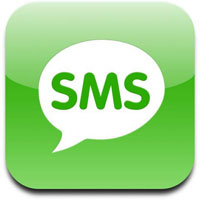SMS is 20 years old

In the ever-changing world of technology, there are only a few things that have proven to be as resilient to change as SMS messages.
Despite the impressive number of different ways people can communicate, texting to this day remains a 160-character way of delivering news, gossip, emoticons, notifications, and much more. They bring together more people than Facebook or Twitter. Because of them, even the government resigned!
December 3 - the 20th anniversary of the first SMS message.
Today, Earth's inhabitants send more than 200,000 messages per second! But the technology had a rather modest start.
Her appearance can be traced to the Danish pizzeria in 1984. Then Matti McKonen, a Finnish engineer, was in Copenhagen at a telecommunication conference. He began to discuss with two colleagues the idea of a messaging system on top of GSM. At that time, GSM was Scandinavian technology. Only later did it become a European standard.
Eight years later, SMS became the standard, and Neil Papworth, an engineer who works for the Sema Group in the UK, was one of the members of the SMS software development team for Vodafone.
The work lasted almost a year. Vodafone conducted many-sided checks before introducing the Sema Group SMS messaging system. And finally, on December 3, 1992, Papworth sent the first message via the Vodafone GSM network using a personal computer. Richard Jarvis with Orbitel 901 (which weighs more than 2 kg) was the forerunner. This post was “ Merry Christmas ”.

Thus began the era of text messaging.
“People always ask if this was a monumental event for me,” Papworth said in an interview. “For me (and I was working for Sema at that time), it only meant that Vodafone paid us to write software. And we have completed this work. ”
At first, the main purpose of text messaging was to notify subscribers of a new voicemail. And this service was provided free of charge. Even in itself, this was a significant innovation - otherwise people had to independently check their voicemail for new messages.
Later, in 1995 - three years after the first SMS - users sent an average of one message every two and a half months. SMS took several years to properly disperse - and most of this time even the inventor himself did not have his own mobile phone.
The advent of prepaid plans and innovations like T9 has predetermined a significant increase in the number of SMS messages in the world. In 2000, the industry counted 17 billion text messages. And this number then increased almost 20 times in just the next few years.
The current number of mobile users has approximately 6 billion subscribers. Part of the reason for SMS success, and perhaps even the key to success, is its universal availability. Indeed, with the help of SMS you can reach anyone with a mobile phone on Earth!
Looking back at the 20 years that have passed since the first message, Papworth says he is not surprised at the success that SMS achieved.
In those days, I never thought that all this would be so big. Now I see what it has become, and I'm not surprised, because it is so simple. This is on all phones. Not everyone on the planet has a smartphone and GSM is only just appearing in some countries. And in these countries not everyone will have smartphones, but everyone will have at least the simplest phones in which they will have SMS.
